Are Japanese People Truly Non-Religious?
People sometimes say that “the Japanese have no religion.
In reality, relatively few people in Japan clearly identify themselves with a particular faith, and, unlike in many Western countries, it is not common practice to attend church every week.
So, are the Japanese truly non-religious?
At New Year’s, people visit shrines for hatsumōde, the first shrine visit of the year.
Many weddings are held in chapel-style venues that resemble churches, while funerals are most often conducted in Buddhist rites.
For most Japanese people, these are simply natural customs, rather than actions consciously understood as “acts of faith.”
Yet behind these practices lie religious value systems rooted in Shinto, Buddhism, and other traditions.
If we look closely at the everyday lives of Japanese people, who are so often described as “non-religious,” we begin to see that religion—and worldviews closely related to it—quietly permeate daily life in many different forms.
Shinto and Reverence for Nature
For the Japanese, nature has never been just a neutral backdrop.
It has long been perceived as something imbued with a subtle, sacred presence.
From ancient times, the idea of “yaoyorozu no kami”—literally “eight million gods,” meaning countless deities—has taken root.
Mountains and rivers, trees and stones, even the wind and the earth itself have all been regarded as dwelling places of the divine.
This way of seeing nature has developed not only as a matter of awe or faith, but also as a form of wisdom that enabled people to live together with the natural world.
That sensibility continues into the present.
Going to a shrine at New Year’s for hatsumōde, or keeping a household kamidana (Shinto altar) and offering daily prayers, can be seen as extensions of this tradition.
For many Japanese people, however, these actions feel less like “practicing a religion” and more like natural gestures woven into everyday life.
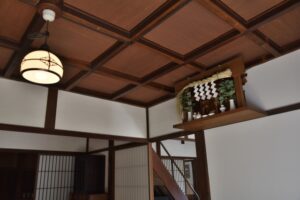
In Japan, many homes have a household Shinto altar where people offer daily prayers.
Precisely because of this, Shinto extends beyond the narrow category of “religion” and has deeply permeated Japanese values and ways of living.
Showing respect to nature and giving thanks for its blessings—
this is a core aspect of Shinto’s spirit, passed down from ancient times and, in changing forms, carried quietly within the hearts of people in Japan today.
Buddhism and the Culture of Memorialization
Buddhism, for its part, has also exerted a profound influence on Japanese life.
Visiting graves during Obon or the equinoctial weeks, and placing one’s hands together in front of the family Buddhist altar—
these memorial customs have been handed down naturally in many households and serve as important occasions for reaffirming ties with one’s ancestors.
For most people, these acts are understood less as “religious obligations” than as a natural way to honor family and forebears.
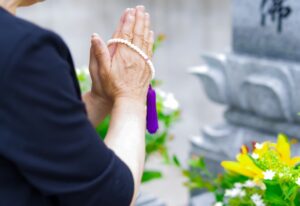
Visiting family graves during Obon or Higan to offer prayers is an everyday custom for many Japanese people.
Buddhism has also shaped Japanese views on life and death.
Ideas such as reincarnation and mujō (impermanence) often flow quietly beneath the surface of people’s outlook on life, even when they are not explicitly recognized as religious concepts.
The sense that the falling of cherry blossoms is “beautiful,” or the cultural tendency to find meaning in “transience,” is frequently described as resonating with this Buddhist awareness of impermanence.
Through everyday acts of memorialization—placing one’s hands together in prayer—and through an acceptance of impermanence in how people think about life and death, Buddhism has gently accompanied the Japanese heart.
It lives on today not only as a formal religion, but also as a quiet support for contemplating life and death.
Christianity Woven into Everyday Life
Interestingly, Japanese society has also adopted elements of Christian culture with considerable flexibility.
Chapel-style weddings and Christmas celebrations enjoyed with little awareness of their religious background are prime examples.
At weddings, people admire white dresses and the long aisle of the “virgin road,” while at Christmas they enjoy cakes and illuminations.
What is emphasized here is less a strong “faith” than the role of these events as ways to mark life’s milestones and seasonal joy with a sense of occasion.
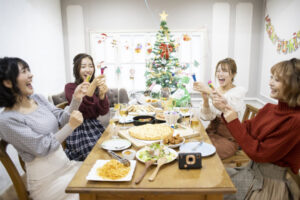
In Japan, Christmas is enjoyed as a seasonal event.
In recent years, Western festivities such as Halloween and Easter have also spread as events for children.
Their religious roots are not heavily foregrounded; instead, costumes, games, and decorations take center stage.
Blended with commercial elements, these customs are gradually transforming into uniquely Japanese styles.
Even when an event originally has religious meaning, the Japanese tend not to cling too tightly to its doctrinal core.
Rather, they accept it as a “fun annual event,” adapt it in their own way, and allow it to settle into their culture.
This tendency—to adopt, mix, and eventually integrate outside elements as part of one’s own culture—is a hallmark of the Japanese approach, and one that cannot be overlooked when considering their religious outlook.
Why, Then, Are the Japanese Seen as “Non-Religious”?
Why, then, are the Japanese so often described as “non-religious”?
One reason is that they have generally refrained from committing themselves strongly to a single religion, instead maintaining a looser sense of distance.
Depending on the situation and the occasion, they have accepted and used Shinto, Buddhism, and even Christianity without much sense of conflict.
From the perspective of cultures where faith is grounded in a clear, exclusive doctrine, this refusal to “choose just one” can easily appear inconsistent, or even indicative of weak belief.
Another important factor is that Japanese people often incorporate religious behaviors into daily life so naturally that they no longer recognize them as “religious” at all.
Putting one’s hands together in prayer, making offerings, speaking to one’s ancestors—
for most people, these behaviors are seen less as explicit “expressions of faith” and more as simple, self-evident parts of ordinary life.
For many Japanese, religion is not something to be proclaimed loudly.
It is closer to an “atmosphere” that quietly takes root in the depths of the heart.
That is why, even when people describe themselves as “non-religious,” their everyday actions and sensibilities still carry a very real religious dimension.
What Is the Essence of Religion?
What, then, is the essence of religion?
Definitions vary, but we might say it is the human effort to feel connected to something unseen, and within that connection, to seek meaning in life and a place of spiritual refuge.
Japanese people rarely label their own actions explicitly as “faith.”
Yet within the daily life that is lived in awareness of ties to nature, ancestors, and the people around them, the essence of religion breathes quietly.
The Shinto view of nature and the Buddhist view of impermanence have formed the underlying soil of Japanese values.
Layered on top of this, elements of Western culture—such as those derived from Christianity—have been flexibly adopted, and together these currents have shaped the Japanese understanding of religion.
Rather than entrusting themselves completely to a specific doctrine or institutional framework, many Japanese people choose instead to weave gratitude and respect into their day-to-day behavior.
This way of living—a kind of “religiosity that seeps into ordinary life”—is one of the defining features of the Japanese attitude toward religion.
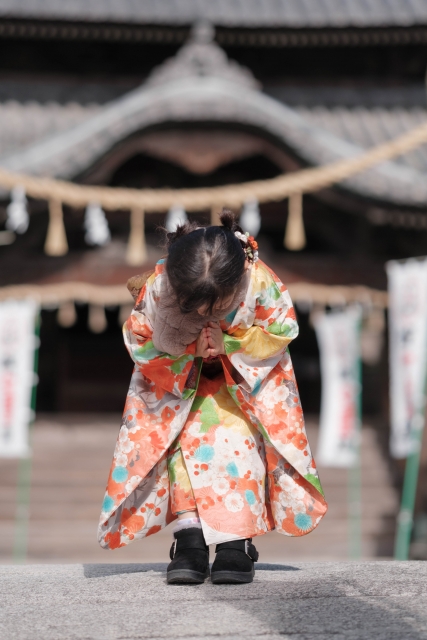
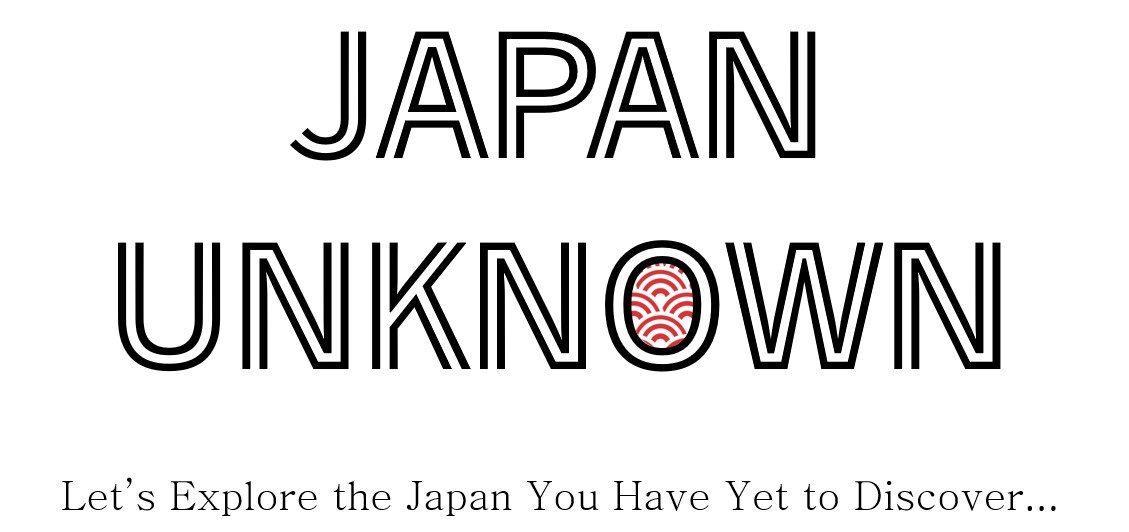
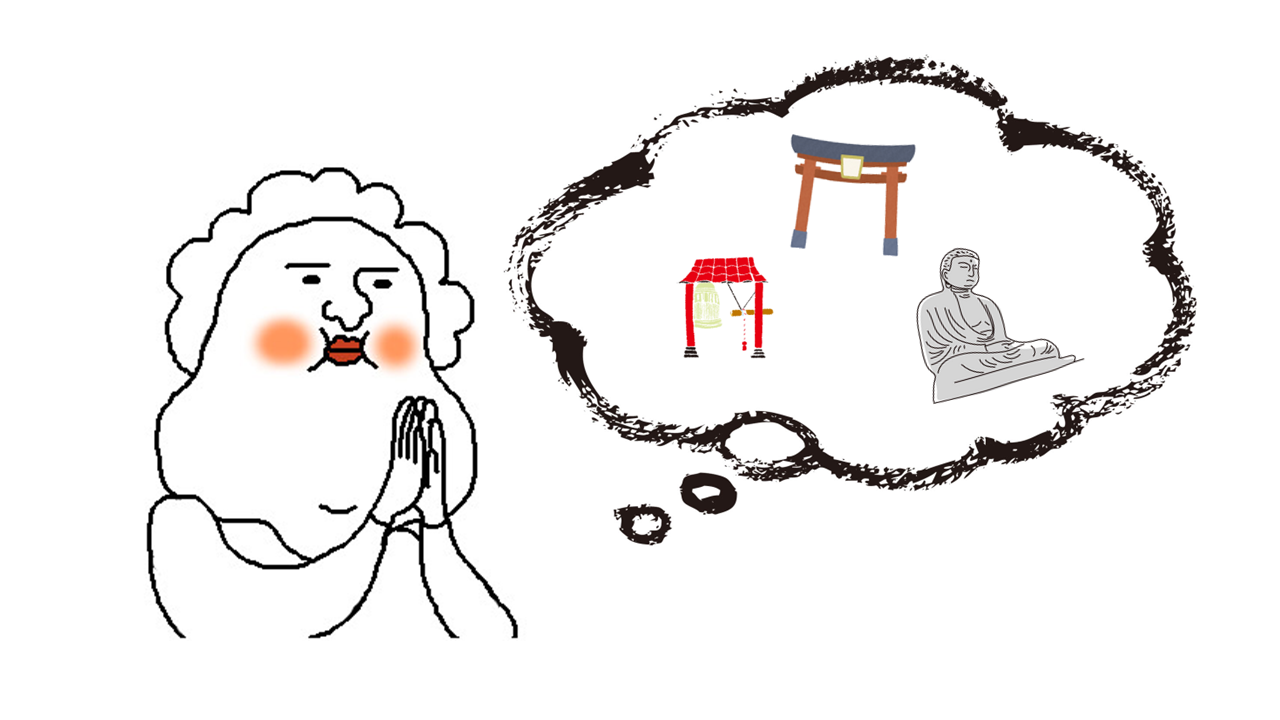



コメント